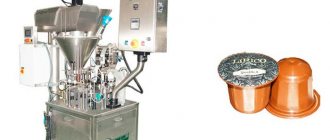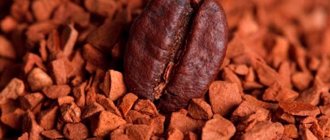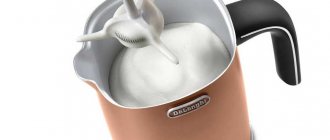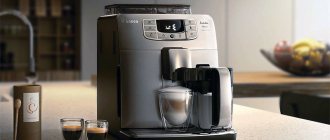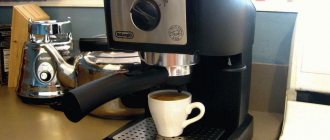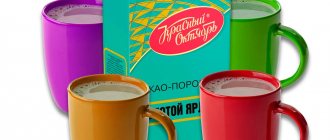Characteristics of a good foam
Before you figure out which milk gives the best foam, you need to understand what exactly is included in the list of this concept:
- Firstly, the consistency of the foam . It should be homogeneous, bubbly and soft. If you take it with a tablespoon and turn it upside down, the foam will slowly run down the edges, but will not fall right away. 15-20 minutes after preparing the cappuccino, its height remains virtually unchanged.
- Secondly, the rich taste of the ice cream . This organoleptic indicator varies depending on the fat content of the milk. Low-fat options are excluded, since it is almost impossible to whip them to foam, and the taste will be interrupted by coffee.
- Thirdly, the characteristic viscosity of the foam , which makes the taste of coffee unique. Achieved only by using milk with a high protein content.
What about plant milk?
When making cappuccino, natural cow milk can be replaced with a product of plant origin. The foam turns out to be similar in appearance, but the taste and aroma characteristics are different. When choosing such milk, you need to focus on the same requirements as for products of animal origin. It should be remembered that the protein and fat content of all varieties is different. Errors may occur when using products from different brands.
What types are suitable for cappuccino from a variety of plant milks:
- soy;
- coconut;
- almond;
- nutty.
Just as in the case of cow's milk, you cannot use a dry mixture to make cappuccino.
Key selection parameters: what you should pay special attention to
Where do you use the coffee machine?
In catering at home
Experienced baristas who make coffee every day and know everything about this process say that when choosing milk you need to take into account the following nuances:
- Fat content - the higher the concentration of milk fats in the product, the richer the creamy taste will be. For cappuccino with stable foam, milk with a fat content of 2.5-3% is suitable. For lattes and latte macchiato, 1.5-2% is enough. The fattier the milk, the faster it whips and the longer the foam lasts.
- Degree of naturalness – when using milk in a coffee machine, fresh whole and fresh milk is not suitable. It is best to use pasteurized and ultra-pasteurized as it is easier to whip and easier to store.
- Packaging features : tetrapacks with a lid are convenient. Milk is added to the machine as it is consumed, and the bulk of it is stored in the refrigerator.
- The percentage of protein content - this indicator determines the characteristics of the foam itself. A soft creamy taste, stable foam that does not settle and stretches pleasantly while drinking coffee is achieved through milk with a protein content of at least 3 g.
- Date of manufacture - milk, the expiration date of which is a week is not suitable. We need ultra-pasteurized varieties that can be stored at room temperature without losing their properties.
In addition, the quality of milk foam depends on such parameters as:
- Degree of cooling - the colder it is, the faster the foam whips and the more stable it is.
- Features of the coffee machine - some cappuccino makers become clogged over time and work worse.
Expert opinion
Borodina Galina Valerievna
Coffee experts do not recommend using regular packaged milk, but giving preference to a product marked “For cappuccino”, “For whipping”, “For coffee machines”. These options have a thicker structure and allow you to get the perfect foam.
Which milk should I choose for my coffee machine?
The criteria for selecting the main ingredient do not depend on the cooking method. An exception may be the situation when the cappuccino maker becomes clogged while using a certain product. Suitable milk for making cappuccino in a coffee machine should foam well. In this case, the product is poured directly from the refrigerator, and when whipping, the liquid is automatically heated.
For example, such a function is present in equipment from the DeLonghi trademark. Be careful as the steam released when whipping can cause burns.
To prepare cappuccino in a capsule coffee machine, you should carefully choose the type of milk, especially of plant origin. You will have to test products from several brands to find the most suitable option. For example, coconut and almond milk are combined with Arpeggio, Livanto, Volluto, Linizio Lungo or Vivalto Lungo capsules.
The best specialty milk brands for coffee machines
It doesn’t matter whether you froth milk using a mini mixer or a cappuccino maker, it is best to use a specialized product specifically designed for this purpose.
Rioba “Ideal for cappuccino”
Milk with a fat content of 3.5%, whips easily, has a convenient packaging with a sharp spout and good taste. With a protein content of 2.8 g per 1 liter, the product whips well, and the resulting foam does not fall off for a long time.
| Advantages | Flaws |
| Ergonomic packaging | Can only be found in the Metro supermarket chain |
| Large volume | |
| Thick structure, dense consistency | |
| Natural taste of creamy ice cream that emphasizes the tenderness of coffee | |
| Low price (about 120 rubles) with relatively high quality |
Rioba positions itself as a manufacturer of high-quality dairy products, using only natural milk as a base. Special packaging allows you to maintain freshness for more than 35 days.
Pe
Milk with a fat content of 3.2%, which, when whipped, allows you to obtain a soft and delicate, but viscous and fairly stable foam. This option is ideal for making cappuccino. Beats well with hand blenders.
| Advantages | Flaws |
| High protein content - 3.7 g | Volume 950 ml instead of the required liter |
| Rich milky taste | Difficult to find in regular retail stores |
| Thick foam that withstands a variety of sprinkles and does not settle | |
| Convenient dispenser with lid | |
| Has a long shelf life |
The cost of packaging is about 110-130 rubles. Some baristas do not use this milk, complaining about the unattractive taste, which is “clogged” by the aroma of coffee. In machines, due to high fat content, a characteristic coating can form, which forces the cappuccino maker to be cleaned daily.
Milk river “For cappuccino”
This milk has proven itself in the preparation of not only cappuccino, but also other coffee drinks. The foam whips up quickly and holds its shape for a long time. But baristas fell in love with this product precisely for its taste. The unique aroma and tenderness of the ice cream, which literally melts on the lips and leaves a pleasant aftertaste.
| Advantages | Flaws |
| Affordable price - about 70 rubles | None |
| Can be found in any store | |
| Convenient dispenser |
This type of milk is also used to make Thai ice cream, as it is quite dense in structure and has a real creamy taste.
MK Chef Line Specialty cappuccino
Milk, produced in accordance with all GOST standards, has a pleasant taste and aroma. Fat content is 3.5%, which allows you to get a dense but airy foam with a creamy aftertaste.
| Advantages | Flaws |
| Has convenient packaging | None |
| Can be stored at room temperature while maintaining taste and basic qualities | |
| Does not contain GMOs | |
| Affordable price and can be purchased in any stores |
The product has proven itself not only in making coffee, but also in porridges and milk soups.
Can I use cream?
Some people will find cappuccino with cream tasty, some will not. The rich, creamy aftertaste adds zest to the drink and reveals the flavors of coffee in a new way.
Interesting! How to roast coffee beans at home
Gourmets love to experiment and create unique recipes, whipping dairy products in various ways (blender, mixer), and not just using automatic cappuccino makers.
Expert opinion
Vadim Kudryavtsev
Coffee expert, professional barista and simply in love with this aromatic drink.
Ask the barista a question
Everyone chooses the percentage of fat in the cream according to their own taste; 10% and 50% are suitable. For proper cappuccino, it is better to buy cream with a fat content of 10-15%.
When whipped, heavy cream forms lumps that look unattractive and taste unpleasant.
Cream with a fat content of up to 15% forms a uniform, smooth foam with a pleasant texture and dissolves in coffee.
The best non-specialty brands
If it is not possible to purchase special milk, you can use analogues, which are also used for regular drinking. In terms of taste, this product is no different, it is whipped in the same way, the foam has all the necessary parameters.
According to experts, the following types of milk are ideal for home use of coffee machines:
Prostokvashino “Otbornoe” 4.5% fat
In addition to its high butterfat content, milk is packed with nutrients.
Village Zelenoe 3.2% fat
It whips up easily, has a pleasant taste and a fairly thick consistency.
Valio 3.2% fat
High quality, natural taste, but slightly overpriced.
It is not recommended to use whole cow's milk even after boiling it. It is impossible to track its fat content, which does not provide guarantees regarding the quality of whipping and the foam formed.
The role of fat content
According to experienced baristas, the fat content of milk has virtually no effect on the whipping process. But this indicator is extremely important for the density and durability of the foam. The best fat content of milk for cappuccino is from 3 to 4%. This is the only way to get a thick, sweetish-creamy “cap”, for which the drink is valued.
Optimal taste and texture is provided by a fat content of 3.5%. It is from this milk that cappuccino is prepared in coffee shops.
Any drink connoisseur will notice the use of a low-fat product. The coffee takes on a grayish tint, and the top turns dry and crumbly. Dubious pleasure.
What does the choice depend on?
The key criterion when choosing milk for coffee machines is the intended use:
- In public catering (bars, coffee shops, restaurants) - to obtain excellent quality coffee, only special brands of milk are used, which quickly whip up and produce stable foam.
- For home use - you can take any milk that you like in taste and quality, but the resulting drink will be far from the one prepared in a coffee shop.
Some coffee shop owners, in pursuit of profit, skimp on the quality of products and buy regular milk for coffee machines. As a result: the foam settles quickly, is not so elastic and has no pronounced taste.
Cappuccino
Cappuccino is a drink that was invented in Italy hundreds of years ago, its creators were Capuchin monks, and it consisted of coffee and fatty milk, then goat milk was used in cooking. Currently, there are many recipes for making such coffee, but milk whipped into thick foam is an integral part of the preparation. The classic recipe for this coffee includes:
- strong espresso;
- frothed milk;
- and thick milk foam.
They also add chocolate, various syrups and other ingredients that significantly affect the taste. The composition is influenced by the region in which the drink is prepared.
Initially, the product was whipped by hand, then a cappuccino machine was invented, a device consisting of two containers, one of which was intended for water and the other for milk. The water was heated, steam was produced, it flowed through the tube into the second container, whipping the contents into a thick foam. Nowadays coffee machines whip everything up with steam.
Secrets of successful cooking
To create the perfect milk coffee with foam, you should follow several rules:
- When preparing, you should take into account the proportions; the drink consists of three equal parts of espresso, milk and thick foam. If you add a little more milk, the taste of the drink will not be what you want.
- The poured milk should have a temperature of 4-5 degrees, since it takes time to whip into foam, and warm milk quickly overheats, not giving the desired result. The frothed milk reaches a temperature of 60-65 degrees; with this heating, lactose begins to break down into simple sugars, making the components tastier. It is not recommended to increase the heating degrees, since the enzymes and sugars included in the composition begin to disintegrate and the drink loses the desired taste, and when boiled, an unpleasant odor and bitter taste may appear.
- Milk makes up two-thirds of a cappuccino and must be taken with increased fat content, which makes the foam thick and dense, whips faster and lasts longer. Due to its fat content, the calorie content of the resulting delicacy can range from 60 kcal per hundred grams. For those for whom this point is important, but cannot give up delicious coffee, the addition of sugar and various syrups should be excluded.
At championships, baristas often prepare this coffee, observing all traditions and requirements.
Characteristics of a good foam
When cooking, certain requirements and proportions of the constituent components must be observed. Foam is an important part of the drink; its qualities are determined by several points:
- The consistency of the resulting foam should be uniform, soft and have bubbles. It should flow slowly from the spoon, and after some time its height does not fall.
- It should have a bright ice cream flavor; its intensity is affected by the fat content of the whipped product. It should be remembered that if you use skim milk, you will not be able to froth it.
Another indicator is the viscosity of the foam, which gives the drink a more refined taste; it appears only when using a product with a high protein content.
The quality of the foam will also be affected by the following indicators:
- chilling, the colder the whipped product is, the faster it will whip and the more stable the foam will be;
- features of the device that will froth milk, over time some of them become clogged and begin to work worse.
It is recommended to choose not just milk in a package with high fat content and protein, but one that has an o, “for whipping” or with the inscription “for coffee machines.” Using them you can get excellent thick and elastic foam.
Lactose intolerance: where to get milk for cappuccino and latte?
Some people, due to their physiological characteristics or religious reasons, cannot use animal milk. How, then, can you prepare a delicious coffee drink in a coffee machine with subtle milky notes? Experts recommend using plant analogues of milk, with which coffee reveals its taste in a new way.
Most often used:
- Almond milk - when whipped separately, this milk separates and curdles, so experts use a trick. First, espresso is prepared, then almond milk is added and the whole thing is whipped in a cappuccino maker.
- Oat milk - milk whips well, has a dense consistency, but the foam is unstable and in the next 3-5 minutes it settles by half.
- Soy - easily whips into foam, but does not tolerate high temperatures, so it is added to slightly cooled ready-made coffee.
Expert opinion
Borodina Galina Valerievna
Experts ask you to pay attention to the fact that milk of the same brand can froth differently and have an uncharacteristic taste. It all depends on the raw materials used and the characteristics of production.
Cooking rules
Which milk is best for cappuccino in a coffee machine?
The coffee machine simplifies the preparation of a coffee drink. A coffee maker is also a good choice if it has a built-in cappuccino maker.
Delonghi's company has proven itself to be a good company. It produces capsule coffee machines, coffee makers and automatic coffee machines.
Subtleties and nuances
To properly froth milk for cappuccino in a coffee machine, follow these rules.
Before frothing liquid, clean and dry the cappuccino maker so that no condensation or dirt remains inside.
Choose a separate mug of 250-200 milliliters (for 100-150 milliliters of milk). The drink is whipped for 15-25 seconds. During this time, the liquid level doubles.
Place the mug under the cappuccino maker when the steam becomes dry, without liquid. Do not place the tube perpendicularly. It is important that a 45-degree angle is formed so that the tube whips the foam correctly. The nozzle should not reach the bottom of the mug; there should be 0.7 centimeters between them.
When the foam rises and rises close to the edge, you need to lower the nozzle deeper down, slowly and smoothly moving the mug from side to side.
Find out more in the article “How to froth milk for cappuccino.”
Lactose and protein content
The amount of protein contained in the drink affects the quality characteristics of the foam:
- gives stability that allows it not to settle for a long time;
- makes the creamy taste more pronounced;
- imparts elasticity.
Be sure to read: Can you drink coffee with energy drinks?
This effect can be achieved provided that milk containing at least 3 g of protein is used to prepare cappuccino.
For cappuccino, only natural products are chosen, excluding the presence of various powders.
The classic sweet taste of the foam is provided by milk sugar (lactose). When heated, it splits into two components: galactose and glucose. It is possible to get a “cap” with a rich taste only if the carbohydrate content is not lower than 4 g. Due to lactose intolerance by some people, good coffee shops prepare lactose-free cappuccino with a top that is not inferior in taste to the classic version.
Suitable milk temperature
The rules for preparing high-quality cappuccino require the use of milk at a temperature of +4 °C. In addition, the product should not be boiled before beating. In the process of obtaining foam, it is important not to exceed the temperature, varying in the range: +67… +75 °C. Otherwise, protein compounds will be destroyed, the drink will acquire an unpleasant odor and bitter taste, and the foam will not meet the stated characteristics.
Milk is whipped only in a dry pitcher, since contact of this product with moisture significantly impairs the frothing process.
How milk and coffee met
Until the 17th century, most Europeans, not counting travelers and merchants who traded with the East, did not know the taste of coffee. When the first coffee shops finally began to open in European capitals, the local population did not immediately fall in love with the drink: its bitterness was too unusual, and the appearance of the dark brown liquid seemed unappetizing to many.
Indulging the tastes of visitors, innkeepers began to look for a way to mask the bitter taste. In those days, even the rich were not overly spoiled by sweets: sugar brought from the colonies was very expensive, honey was also not cheap. Accordingly, if a sweetener was added to the already expensive coffee, the price of the drink increased, and the number of people willing to try the overseas wonder decreased.
In different European countries, independently of each other, coffee shop owners came up with the idea of softening coffee bitterness with milk. The French, Austrians, and Italians take the lead. Perhaps the latter are right: most coffee drinks have Italian names.
When milk began to be added to coffee everywhere, healthy competition began among baristas: milk was whipped in a variety of ways, achieving the most homogeneous foam, simmered in the oven until brown, experimented with fat content and temperature, painted with milk foam on the surface of the coffee - in a word, they did everything to attract visitors. In the 20th century, the practice was supported by scientific theory, thanks to which the art of frothing milk reached unprecedented heights.
Milk not only changes the taste of coffee, but can also serve an aesthetic function

